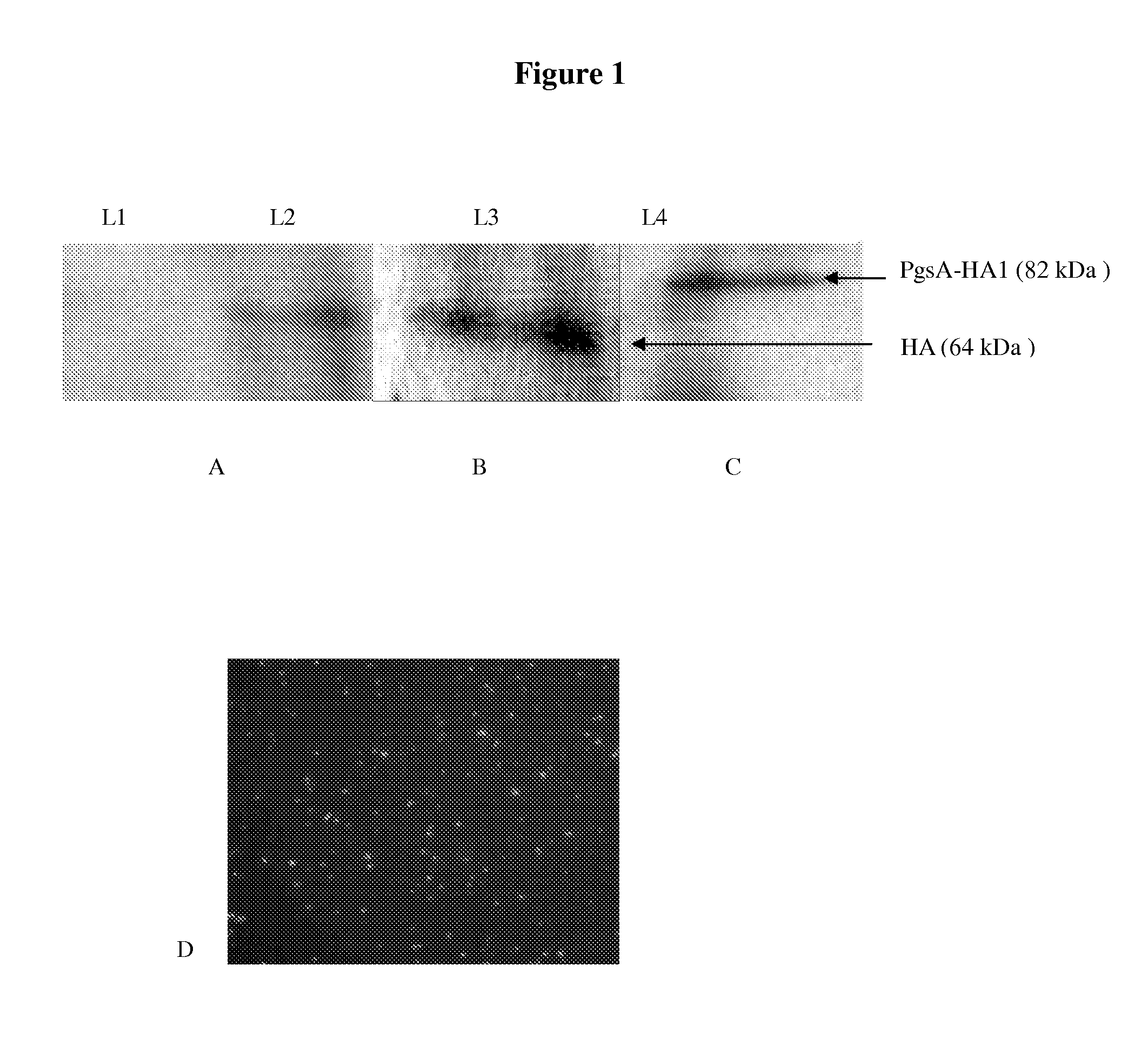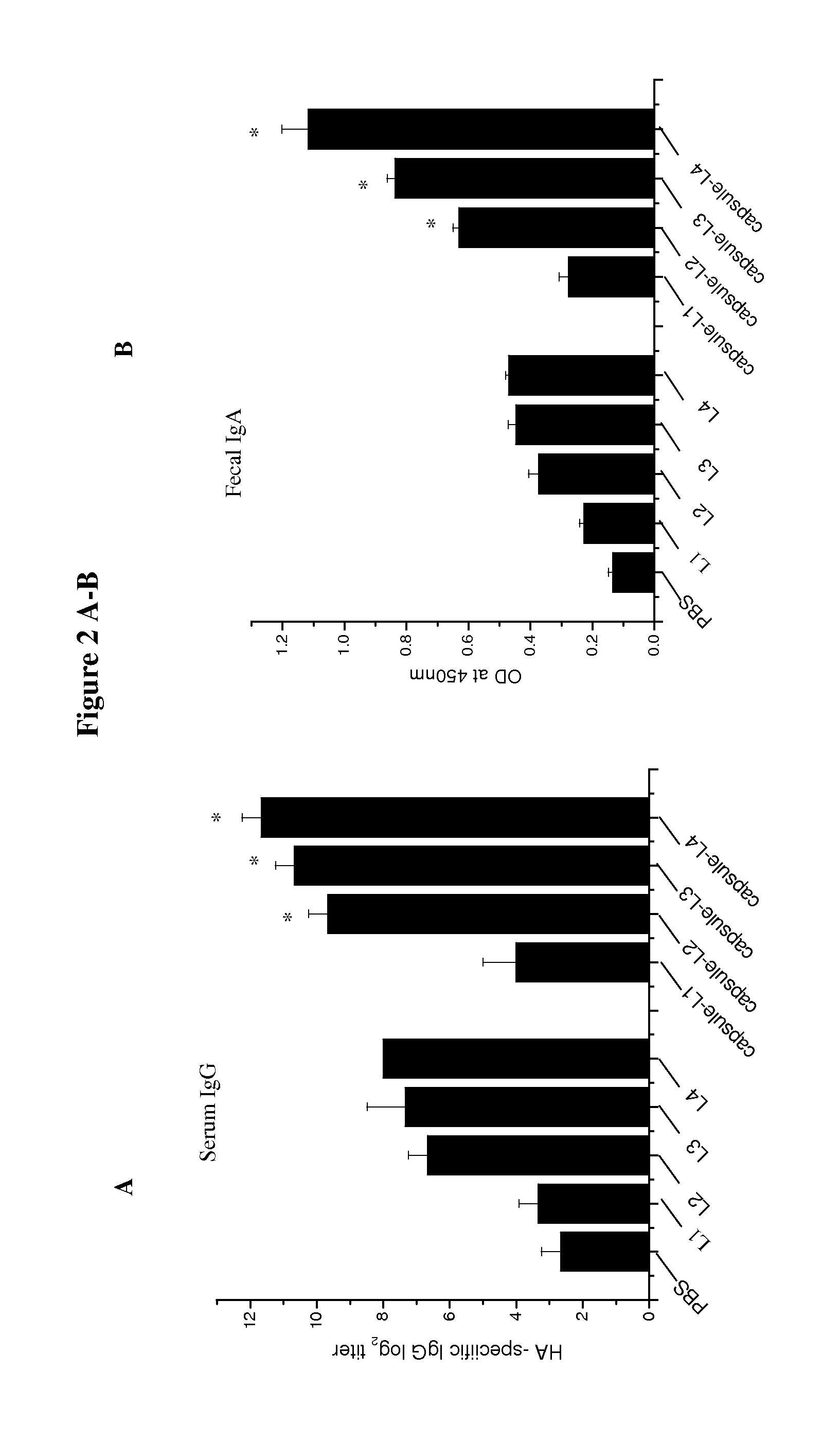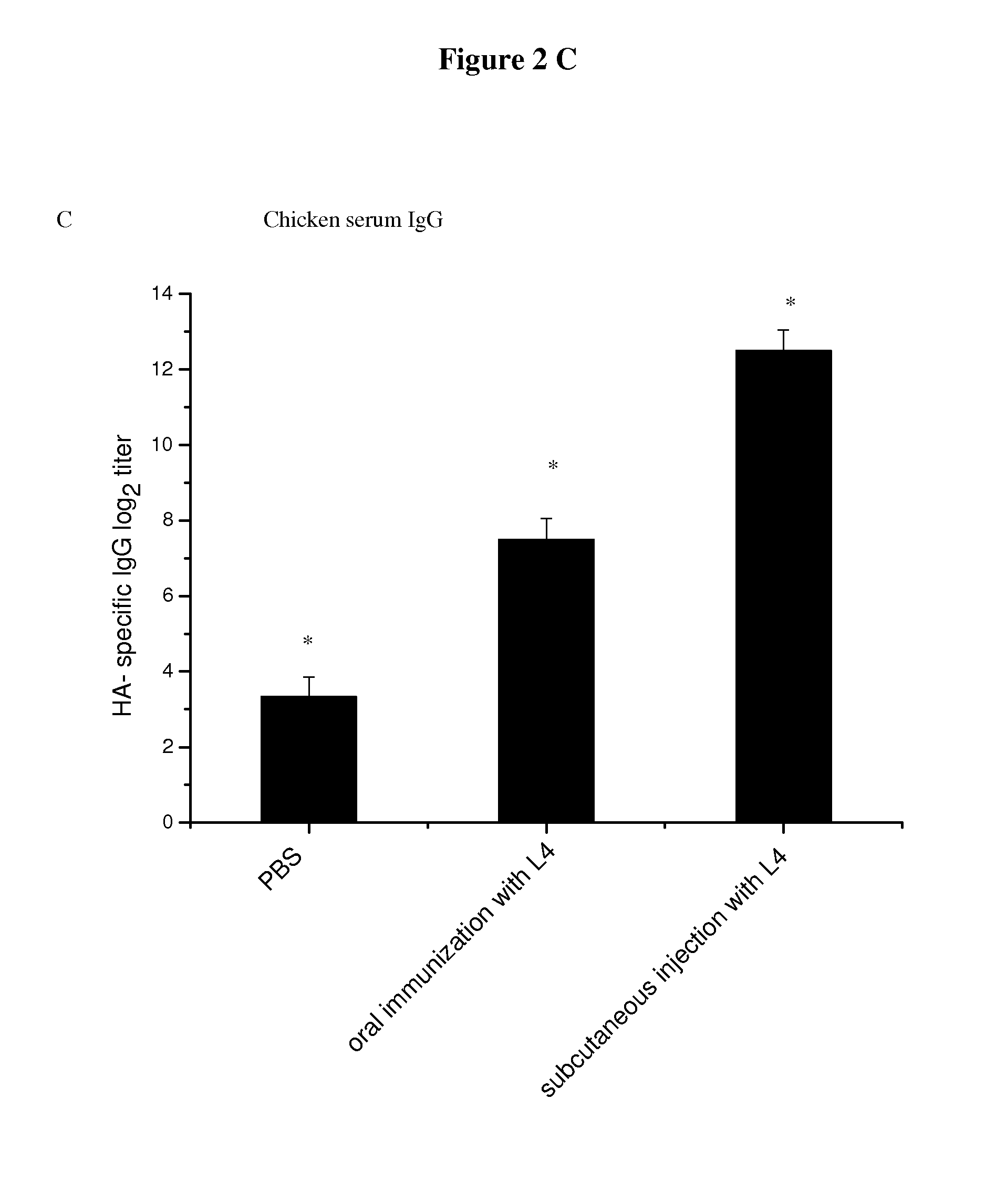Immunoprotection by oral administration of recombinant lactococcus lactis mini-capsules
- Summary
- Abstract
- Description
- Claims
- Application Information
AI Technical Summary
Benefits of technology
Problems solved by technology
Method used
Image
Examples
example 1
Materials and Methods
[0062]Recombinant L. lactis vectors
[0063]Three different antigen expressing plasmids were constructed and named as pNZ8150-HA, pNZ8110-HA and pNZ8110-pgsA-HA1. The pNZ8148 plasmid was purchased from Netherlands NIZO. The plasmids were transformed into the L. lactis NZ9000 stains by electroporation. The most highly expressed clones were selected and cultured at 30° C. in media based on M17 medium supplemented with 0.5% (wt / vol) glucose. Chloramphenicol was used at a concentration of 10 μg / ml.
Western Blot Analysis and Immunofluorescence Microscopy
[0064]The antigen expressions were induced in all the recombinant L. lactis strains by adding nisinA to the final concentration of 10 ng / ml. Growth was continued for 3 hours. For the L1, L2, L4 cultures, L. lactis cells were harvested, washed three times with 500 u1 sterile phosphate-buffered saline (PBS), and resuspended. Aliquot of the samples were mixed with 6× loading buffer and boiled 10 minutes. Extracts were run on...
example 2
Recombinant Lactococcus lactis Vectors
[0073]The construction of recombinant L. lactis vectors expressing the Influenza H5N1 HA antigen
[0074]Four different L. lactis vectors were constructed and named L1, L2, L3, and L4. The vector descriptions and the specific HA expression plasmid contained in each vector were listed in Table 1. Western blot analysis showed the L1 as a control vector which doesn't express any HA (FIG. 1A), and L2 expressed the HA protein (64 kDa) which was mostly found in the cell lysate (FIG. 1A). L3 had an usp45 signal sequence cloned before the HA gene; so expressed HAs were mostly found in the culture supernatant (FIG. 1B). L4 contained a plasmid encoding the HA1 protein (38 kDa) fused with the PgsA surface display motif (44 kDa). The resulted protein expressed had 82 kDa MW (FIG. 1C). In addition, the cell wall anchored distribution of the HA1 protein (L4) was confirmed by immunofluorescence staining (FIG. 1D).
Enteric Capsule Preparation and L. lactis Release ...
example 3
Further Refinement
[0080]To adjust or lower the dose of bacteria used in the present invention, standard in vitro or in vivo titration experiments can be done, using various biological responses or animal survival described above as experimental readouts
[0081]The same kind of titration experiments can also be done to determine the effects of the size of the coated capsule on immune response induction. Capsules of various size can be tested in the in vitro or in vivo experiments described above to investigate the effects on the induction of cellular immune responses, mucosal immune responses, and / or protective immune responses.
[0082]Similarly, the same kind of titration experiments can also be done to determine the effects of using different coating material or mucoadhesive polymers. Capsules coated with different coating materials, or bacteria formulated with different mucoadhesive polymers can be tested in the in vitro or in vivo experiments described above to investigate the effect...
PUM
| Property | Measurement | Unit |
|---|---|---|
| Composition | aaaaa | aaaaa |
| Acidity | aaaaa | aaaaa |
| Hydrophilicity | aaaaa | aaaaa |
Abstract
Description
Claims
Application Information
 Login to View More
Login to View More - R&D
- Intellectual Property
- Life Sciences
- Materials
- Tech Scout
- Unparalleled Data Quality
- Higher Quality Content
- 60% Fewer Hallucinations
Browse by: Latest US Patents, China's latest patents, Technical Efficacy Thesaurus, Application Domain, Technology Topic, Popular Technical Reports.
© 2025 PatSnap. All rights reserved.Legal|Privacy policy|Modern Slavery Act Transparency Statement|Sitemap|About US| Contact US: help@patsnap.com



